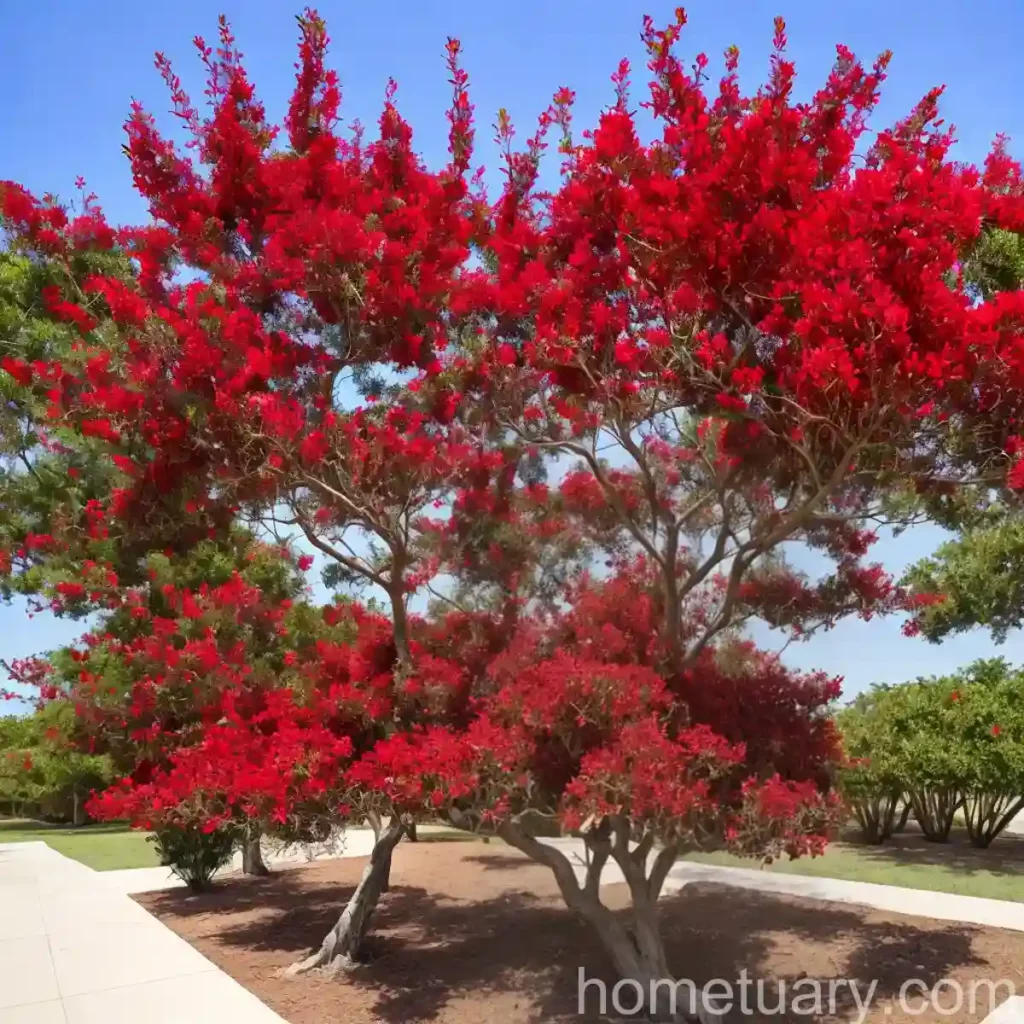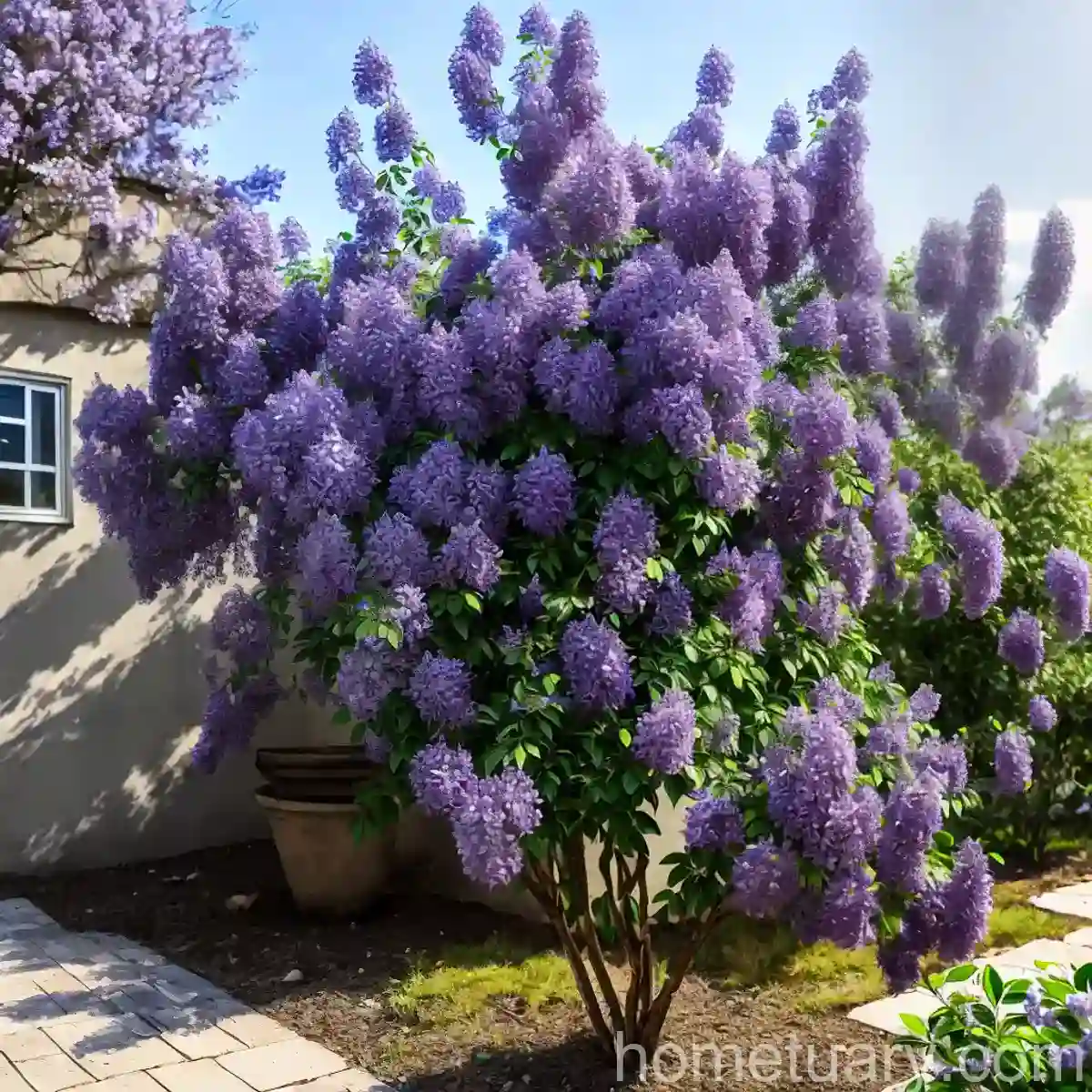The Beauty of Crape Myrtle: Lagerstroemia ‘Country Red’
Crape myrtle, scientifically known as Lagerstroemia ‘Country Red’, is an exquisite ornamental plant adored by gardeners and landscape enthusiasts for its vibrant flowers, stunning bark, and impressive adaptability. This versatile plant can thrive in various climates and soil conditions, making it a popular choice for landscaping and home gardening.
In this comprehensive guide, we will delve into the fascinating world of crape myrtle, exploring its cultural requirements, uses, maintenance, common diseases, and pest control. Whether you are a seasoned horticulturist or a novice plant lover, this article aims to provide valuable insights into the care and cultivation of crape myrtle.
What is Crape Myrtle?
Crape myrtle, Lagerstroemia ‘Country Red’, is a deciduous flowering shrub or small tree that belongs to the Lythraceae family. Known for its showy summer blossoms and multi-hued bark, crape myrtle is a prized addition to gardens, parks, and urban landscapes. The ‘Country Red’ variety, in particular, is esteemed for its striking crimson blooms and elegant growth habit.
Key Takeaways – Crape Myrtle (Lagerstroemia ‘Country Red’)
Before delving into the nuances of caring for crape myrtle, let’s explore some key aspects of this captivating plant:
- Plant Name: Crape Myrtle (Lagerstroemia ‘Country Red’)
- Plant Type: Deciduous shrub or small tree
- Botanical Name: Lagerstroemia ‘Country Red’
- Common Names: Crape myrtle, Crepe myrtle, Crepeflower
- Growth Habit: Upright, spreading
- Mature Height: 10-20 feet
- Mature Spread: 6-15 feet
- Bloom Time: Summer
- Flower Color: Crimson red
- Foliage: Green, transitioning to vibrant fall colors
- Hardiness Zones: 7-9
- Disease Resistance: Moderate to high
Now that we have an overview of crape myrtle’s key characteristics, let’s delve into the specifics of its culture and care requirements.
Culture
Crape myrtles are renowned for their adaptability to various growing conditions, making them suitable for a wide range of landscapes. Understanding the cultural requirements of crape myrtle is essential for fostering healthy growth and abundant flowering.
Uses
The versatility of crape myrtle makes it a valuable asset in landscaping, offering a myriad of uses and design possibilities:
- Ornamental Specimen: Crape myrtle serves as an eye-catching focal point in gardens and landscapes, especially when in full bloom.
- Privacy Screen: When planted in groups, crape myrtle can create an attractive and effective barrier, providing privacy and beauty.
- Street Tree: Its compact size and stunning flowers make crape myrtle an ideal choice for lining streets and boulevards.
- Container Planting: Certain crape myrtle varieties are well-suited for container gardening, adding color and elegance to patios and balconies.
Water
Proper watering is crucial for the health and vigor of crape myrtle plants. While crape myrtles are moderately drought-tolerant once established, consistent moisture is essential, especially during the initial establishment period and hot, dry spells.
- Young Plants: Newly planted crape myrtles require regular watering to establish a strong root system. Water deeply once or twice a week, ensuring that the soil remains evenly moist but not waterlogged.
- Mature Plants: Once established, crape myrtles generally thrive with less frequent watering. However, during extended periods of drought, supplemental irrigation is beneficial, particularly for maintaining vibrant blooms and healthy foliage.
Watering Tips:
- Water at the base of the plant to facilitate deep root penetration.
- Utilize a soaker hose or drip irrigation system to ensure efficient water delivery and minimize evaporation.
- Apply mulch around the base of the plant to conserve soil moisture and reduce watering frequency.
Sunlight
Crape myrtles are sun-loving plants that flourish in full sunlight, although they can tolerate partial shade in certain climates. Adequate sunlight is essential for promoting robust flowering and lush foliage.
Sunlight Requirements:
- Full Sun: Ideally, crape myrtles should receive at least 6-8 hours of direct sunlight per day for optimal growth and blooming.
- Partial Shade: In hotter regions, providing some afternoon shade can help protect crape myrtles from excessive heat and sunburn.
Fertilizer
Fertilizing crape myrtles provides essential nutrients that support healthy growth, blooming, and overall vitality. Understanding the fertilizer requirements and application guidelines is key to maximizing the plant’s potential.
Fertilizer Recommendations:
- Timing: Apply a balanced, slow-release fertilizer in early spring before new growth emerges. Refrain from fertilizing late in the growing season, as this can stimulate tender growth susceptible to frost damage.
- Frequency: For established plants, a once-yearly application in early spring is generally sufficient. Young crape myrtles may benefit from a light application of fertilizer in late spring or early summer, promoting vigorous growth.
Soil
Crape myrtles thrive in well-draining, slightly acidic soils, but they are adaptable to a range of soil types, including clay, loam, and sandy soils. Ensuring proper soil conditions is fundamental to the long-term health and performance of crape myrtle plants.
Soil Requirements:
- Drainage: Good drainage is imperative, as crape myrtles are prone to root rot in waterlogged soils. Amending heavy clay soils with organic matter or perlite can improve drainage and aeration.
- pH Level: Aim for a slightly acidic soil pH between 5.5 and 6.5. Conducting a soil test can provide insights into the current pH and nutrient levels, guiding any necessary soil amendments.
Pruning
Pruning crape myrtles is a common practice that helps maintain a desirable shape, promote flowering, and enhance overall plant health. Understanding the proper pruning techniques and timing is essential for achieving optimal results without compromising the plant’s natural beauty.
Pruning Guidelines:
- Winter Pruning: Crape myrtles are often pruned during the dormant season, typically in late winter or early spring. This dormant pruning allows for the removal of dead or crossing branches and encourages robust spring growth and abundant summer blooming.
- Pruning for Form: When shaping crape myrtles, focus on enhancing the plant’s natural form and structure, avoiding aggressive or excessive pruning that can compromise bloom production and long-term health.
Propagation
Propagating crape myrtles allows for the expansion of your plant collection and the preservation of specific cultivars. While crape myrtles can be propagated using different methods, successful propagation requires attention to detail and adherence to best practices.
Propagation Methods:
- Cuttings: Softwood or hardwood cuttings taken during the appropriate season can be rooted in well-draining potting mix or propagation beds, yielding new crape myrtle plants.
- Air Layering: Encouraging roots to form on a stem while it is still attached to the parent plant can lead to the successful propagation of crape myrtles through air layering.
Container Popularity
Crape myrtles’ versatility extends to container planting, offering an attractive option for individuals with limited space or a penchant for container gardening. Pairing the right crape myrtle variety with a suitable container and proper care can result in stunning displays and thriving plants.
Container Gardening Tips:
- Selecting the Right Variety: Choose compact or dwarf crape myrtle cultivars suited to container planting, considering factors such as mature size and growth habit.
- Container Size: Opt for a spacious container with adequate drainage holes, allowing for unrestricted root development and stability.
- Soil and Watering: Use a well-draining potting mix and provide regular watering to container-grown crape myrtles, monitoring soil moisture to prevent drought stress or waterlogging.
Common Diseases
As with any plant, crape myrtles are susceptible to certain diseases, with issues such as powdery mildew, leaf spot, and Cercospora leaf spot being among the most prevalent. Recognizing the symptoms and implementing effective disease management strategies is crucial for preserving the health and aesthetics of crape myrtle plants.
Disease Diagnosis:
- Powdery Mildew: Characterized by the powdery white coating on leaves, powdery mildew can impact crape myrtles, particularly in humid conditions.
- Leaf Spot: Circular or irregular dark spots on leaves may indicate the presence of fungal leaf spot diseases, which can lead to defoliation and diminished plant vigor.
Common Pests
Several insect pests, such as aphids, scale insects, and Japanese beetles, can affect crape myrtle plants, posing a threat to their overall health and beauty. Implementing proactive pest control measures and monitoring for early signs of infestation can help mitigate pest-related issues.
Pest Control Strategies:
- Aphids: Prone to infesting new growth and tender plant parts, aphids can be managed through natural predators, horticultural oils, or insecticidal soaps.
- Scale Insects: Encourage natural predators, such as ladybugs, and consider targeted insecticide applications to control scale infestations without harming beneficial insects and pollinators.
Botanist’s Tips
As a plant scientist with a passion for crape myrtles, I have gleaned valuable insights and tips that can help enthusiasts cultivate and enjoy these remarkable plants to their fullest potential. Here are some expert tips to consider:
- Selective Pruning: Embrace selective and thoughtful pruning to accentuate the natural beauty and form of crape myrtle plants, ensuring that pruning practices align with the plant’s growth habits and overall health.
- Seasonal Maintenance: Regularly assess crape myrtles for signs of disease, pest infestation, and structural issues, addressing any concerns promptly to maintain plant vitality and aesthetics.
- Soil Amendment: Amending heavy clay soils with compost, pine bark, or perlite can improve soil structure and drainage, promoting healthier root development and overall plant performance.
Fun Facts
To further appreciate the allure and appeal of crape myrtle, consider these captivating and intriguing facts about this beloved plant:
- Exfoliating Bark: Crape myrtles are renowned for their striking exfoliating bark, which peels away to reveal a mosaic of colors and textures, adding visual interest during winter.
- Extended Blooming Period: Depending on the variety, crape myrtles can exhibit an extended blooming period, gracing the landscape with vibrant flowers from mid-summer well into fall.
- Butterfly Magnet: Crape myrtle flowers act as a magnet for butterflies, attracting these enchanting pollinators and contributing to the ecological richness of garden spaces.
Links to External Resources
For further information and insights into crape myrtles, I recommend exploring the following resources:
- American Society for the Prevention of Cruelty to Animals (ASPCA) – Crape Myrtle: ASPCA Plant Guide
- North Carolina State University Extension – Crape Myrtle Pruning
- Clemson Cooperative Extension – Crape Myrtle Bark Scale Management
- University of Florida IFAS Extension – Crape Myrtle Cultivars and Utilization
In conclusion, crape myrtle (Lagerstroemia ‘Country Red’) stands as a testament to nature’s artistry, enchanting admirers with its resplendent blooms and distinctive bark. Embracing the cultural practices, maintenance guidelines, and inherent charm of crape myrtle enables individuals to foster thriving, picturesque landscapes, replete with the beauty and vitality of this extraordinary plant.
As a plant scientist deeply enamored with crape myrtles, I encourage fellow enthusiasts to embark on their own crape myrtle journey, reveling in the timeless allure and enduring fascination of this botanical treasure.
Experience the splendor and versatility of crape myrtle, and witness its transformative impact on the landscape, one vibrant bloom at a time.
I hope you find this comprehensive guide to crape myrtle insightful and informative. Should you have any further queries or require additional information, please do not hesitate to reach out. I am passionate about fostering an appreciation for the remarkable beauty and versatility of plants, and I am committed to sharing my expertise to inspire and empower fellow plant enthusiasts.















